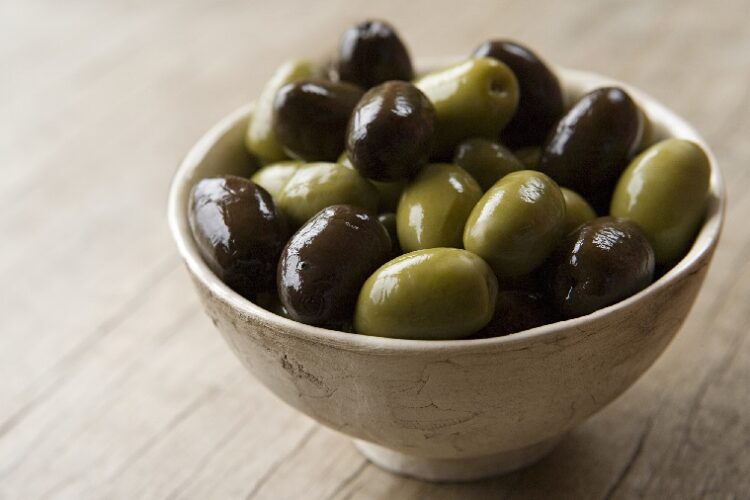Black olives are a type of olives that are allowed to ripen on the tree completely before harvesting. These olives are available in many different varieties depending on the tree species and the geographic origin. However, it is also influenced through curing and storage techniques. Almost any ripe olive is considered “black,” although its true color is more purple or reddish.
Basic Characteristics of Black Olives
The term “black olive” often has more to do with the appearance of the olive instead of its growing or taste profile. Any type of olive tree has the ability to produce black varieties, which makes for several different possibilities.
Common Varieties of Black Olives
An abundant number of olive trees grow across the Middle East and the Mediterranean. The trees have also been successfully transplanted into similar dry and warm climates across the globe, specifically in California as well as the Southwestern United States. Spain, Greece, California, and the southern coasts of France and Italy, are some of the largest producers of black olives in the world.
Kalamata olives grown in Greek soil are some of the most frequently sold variety togetherCalifornia Mission olives. The Spanish Aleppo and Alfonso and French Nicoise and Nyons are also quite in demand in the global markets.
Storage and Curing Techniques
Olives are uneatable when raw even if they are fully ripe. The flesh is often tough and bitter, and their taste is often quite astringent. More often than not, farmers will pack their olives in salted water or oil to “cure” them before consuming.
Just like how there are many varieties of olive, there are also several ways of curing them. Some people store these fruits in seasoned oil for long periods of time, usually with additional herbs for extra flavor.
Another effective way is vinegar soak as well as lye treatments of different lengths. Much is dependent on the ultimate use of the olives, as well as the preferred taste profile. Black olives tend to be tangy, acidic, or even sweet which depends on both on how they were stored and on their variety.
Culinary Uses of Black Olives
Cured black olives are often as an appetizer, and usually served whole. The fruits can also be crushed and mixed with other ingredients to create a tapenade, a kind of olive spread normally used as seasoning for roasted meats or served on bread.
Halved or sliced olives are common in a wide variety of Mediterranean and Middle Eastern foods, including pizzas, stews, and pastas. They are also commonly baked into breads, and also make a salty and tangy addition to many different dishes, from spreads and dips to salads and meat preparations.
Difference between Green and Black Olives
The majority of the olives commercially sold are either green or black, and the key difference between these two goes beyond growing time. All green olives, when left longer on the tree, will ultimately turn deep purple or black. Despite being immature, green olives have an exclusive flavor, and are mostly considered a delicacy. Many green olives must also be cured and stored, which can customize or alter their taste.
Buy black olives online and add them to your next meals!

